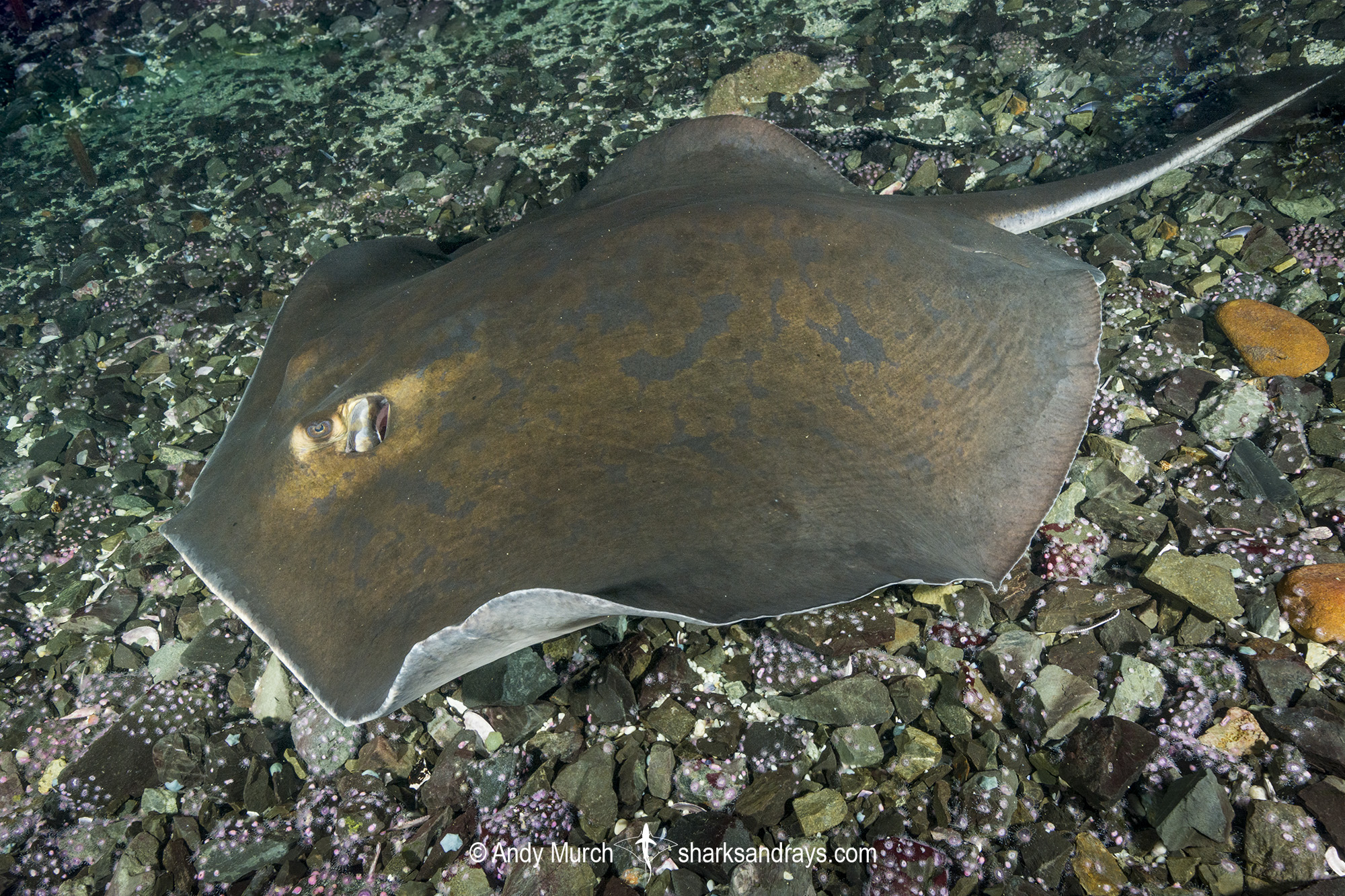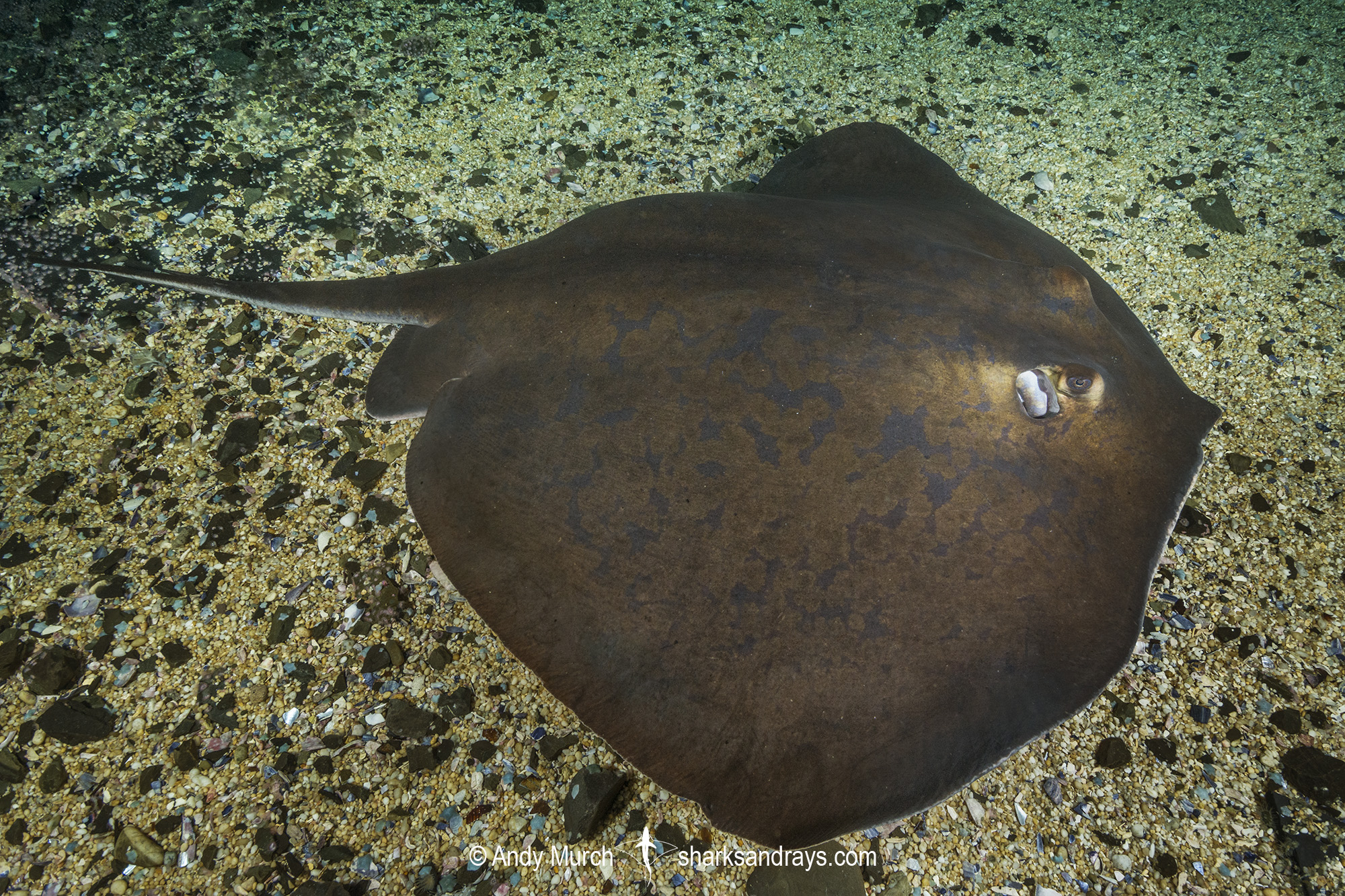Common names
Blue Stingray, Marbled Blue Stingray.
Binomial
Dasyatis chrysonota.
Synonyms
Trygon chrysonata.
Identification
A medium sized stingray with a kite-shaped disc that is slightly wider than long; disc width approximately 1.1-1.2 x length. Snout obtusely angular (119-122º) with a slightly protruding tip. Anterior margins of disc almost straight. Pectoral fin apexes narrowly rounded or angular. Pelvic fins wide with rounded apexes.
Eyes relatively large and protruding. Snout length 1.1-1.3 x combined eye and spiracle length.
Mouth contains 5 oral papillae; 3 in centre and 1 at each side. Shallow labial furrows around mouth. Lower jaw sinuous; mostly convex but concave at symphysis. Small, skirt shaped nasal curtain with a heavily fringed margin. Nostrils oval shaped.
Disc lacks dermal denticles on most animals but larger adults may have a few scattered denticles on disc (but no thorns or tubercles) and numerous small prickles beyond tail sting. Tail broad based, tapering gently to tail sting, then filamentous to tip. Tail length (when intact) less than 2x disc width. Ventral finfold short; about .3x disc width. Dorsal finfold approximately half ventral finfold length. One tail sting usually present.
Colour
Dorsum golden brown to dark brown with irregular greyish-blue blotches that create a marbled pattern; fading towards disc margin. Ventrum white with a dusky disc margin. Tail and fin folds dark.
Size
Maximum disc width 75cm. Disc width at birth 17-20cm.

Conservation Status
NEAR THREATENED
The blue stingray is captured by trawl, commercial and recreational line, beach seine, and gill net fisheries. It is generally discarded alive by recreational fishers, but when trawled, post release mortality is high. Trawl data in South Africa estimates a population reduction of 62% over the past 31 years. Fishing effort in South Africa has decreased, which may help the population stabilize.

Habitat
Warm temperate seas. On soft substrates, sometimes adjacent to reefs. From shallow estuaries to at least 110m.
Distribution
Southern Africa. The blue stingray occurs from central Angola, Namibia, to northeastern South Africa.
An unidentified but similar looking ray from the northern Red Sea could represent a range extension for this species.
Reproduction
Matrotrophic aplacental viviparity. 1-7 pups per litter.
Diet
Diet consists of sea lice, crabs, worms, and small benthic fishes.
Behavior
Spends much of the day resting on the substrate. Inshore in summer, moving into deeper water along the continental shelf in winter.
Reaction to divers
Shy but approachable with non-aggressive movements. Generally bolts if approached closely.
Diving logistics
Blue Stingrays are occasionally seen at dive sites in South Africa. More northerly dive sites may offer better opportunities to see this species but there is little information available from Namibia and Angola.


